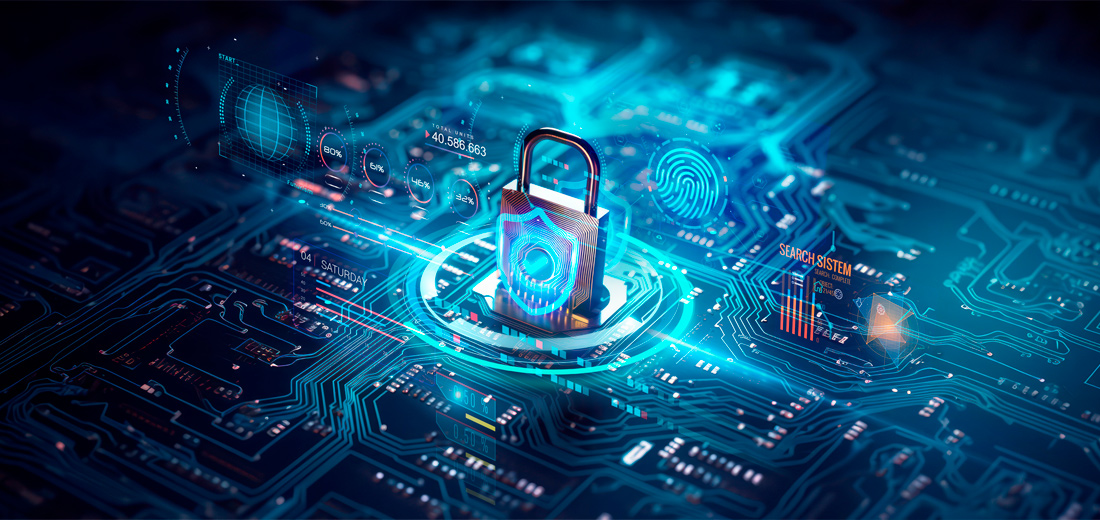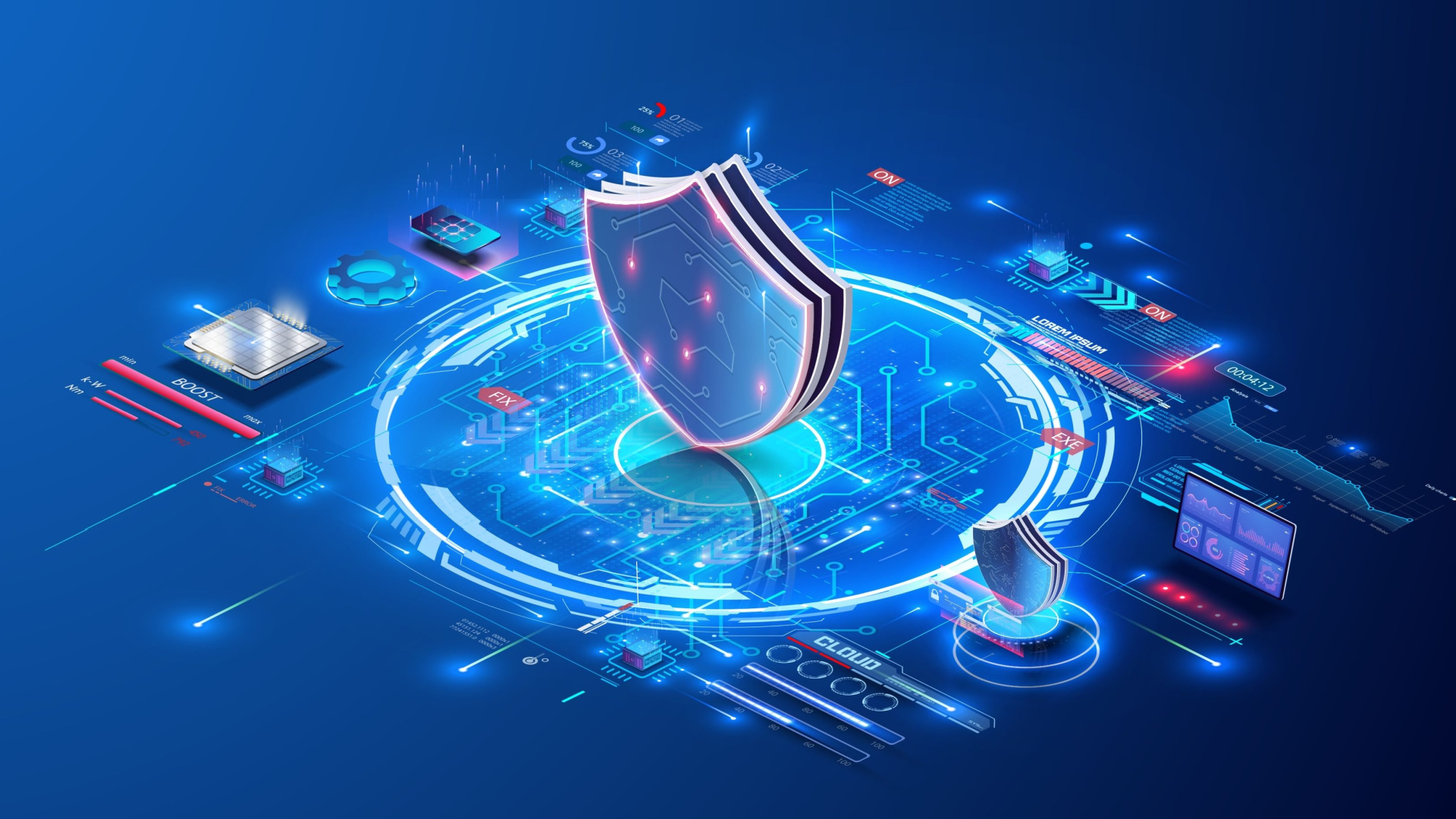- Pro
Cyber resilience defines the future of manufacturing
Comments (0) ()When you purchase through links on our site, we may earn an affiliate commission. Here’s how it works.
 (Image credit: Shutterstock)
(Image credit: Shutterstock)
As the global landscape shifts, the manufacturing sector faces new challenges and opportunities.
The integration of AI tools into manufacturing processes promises increased efficiency and innovation but opens the door to evolving cyber threats targeting vulnerable supply chains.
Vaibhav DuttaSocial Links NavigationVice President and Global Head-Cybersecurity Products & Services at Tata Communications.
- Amazon Black Friday deals are live: here are our picks!
Supply chains are the backbone of the manufacturing industry, intricately woven into daily life. Disruptions can have profound impacts on consumers, as seen with the baby formula shortage of 2022. Rising cyberattacks threaten production on a global scale, with stakes that grow higher as supply chains expand.
You may like-
 The new age of layered security: from supply chains to endpoints
The new age of layered security: from supply chains to endpoints
-
 Mitigating supply chain vulnerabilities
Mitigating supply chain vulnerabilities
-
 The resilient retailer’s guide to proactive cyber defense
The resilient retailer’s guide to proactive cyber defense
Cybersecurity is fast becoming the frontline of industrial continuity. With increasing connected factories, digital workflows, and integrated value chains, the question is urgent: Is the world prepared to protect its expanding industrial base?
When code can crash a conveyor belt
Cyberthreats have evolved beyond stealing data. Today, they disable production, infiltrate operational technology, infect industrial control systems, and weaponize disruption.
The target isn’t always the server room – it’s often the shop floor. As the digital and physical worlds converge, cybersecurity now extends to every connected device, operational system, and edge environment, making operational technology (OT) a prime target.
Think of it this way: ten years ago, protecting your home meant locking the front door. Today, with smart locks, cameras, and connected appliances, each device creates a new vulnerability. It’s the same for manufacturers—every connected machine or sensor is a potential entry point for attackers.
Are you a pro? Subscribe to our newsletterContact me with news and offers from other Future brandsReceive email from us on behalf of our trusted partners or sponsorsBy submitting your information you agree to the Terms & Conditions and Privacy Policy and are aged 16 or over.Just recently, in May 2025, Nucor, one of the largest steel producers in the US – detected a cybersecurity breach that forced the company to halt several production lines at multiple locations.
A cyber breach today isn’t just an IT problem. It’s a business crisis with ripple effects that impact everyday people.
The rise of smart manufacturing brings new cyber risks
The swift adoption of automation and robotics is propelling manufacturing to new heights, but it also expands the cyber threat landscape. For instance, Amazon has deployed 750,000 industrial robots over the last decade, and US industrial robot deployment continues to grow rapidly.
You may like-
 The new age of layered security: from supply chains to endpoints
The new age of layered security: from supply chains to endpoints
-
 Mitigating supply chain vulnerabilities
Mitigating supply chain vulnerabilities
-
 The resilient retailer’s guide to proactive cyber defense
The resilient retailer’s guide to proactive cyber defense
Each connected device enhances efficiency but introduces new vulnerabilities. Protecting both information and infrastructure is now essential to maintaining business continuity.
A report by Dragos, revealed an 87% increase in ransomware attacks on industrial organizations last year alone, with average ransomware payments in manufacturing reaching $1.5 million.
Industry 5.0: Where cyber resilience is core to progress
In the era of Industry 5.0—where human-centric innovation, automation, and sustainability intersect—cybersecurity must be embedded into industrial architecture itself. Cybersecurity is not an insurance policy; it is a capability. One that ensures uptime, safeguards trust, and protects progress.
From reactive to resilient
Resilience in manufacturing means building an unshakable foundation that supports both IT and OT security. A robust network underpins supply chain integrity, ensures production continuity, and mitigates risks before escalation.
For example, a leading European bakery overcame connectivity challenges by implementing an SDWAN solution, eliminating long outages and ensuring centralized management of infrastructure at 12 manufacturing sites.
This approach reduced downtime, enabled uninterrupted access to critical production systems, and streamlined security monitoring.
This centralization not only improved operational efficiency but also enhanced security posture by simplifying network monitoring, traffic control, and failover processes. With near-zero downtime, the network ensured uninterrupted access to SAP-based production systems, critical for managing orders, recipes, and inventory.
Proactive measures like these will define the future of manufacturing. Here are key steps the industry must prioritize:
- Prioritize OT security assessments at scale Routine vulnerability mapping across operational environments is essential. To ensure full coverage and scale of these assessments, security leaders should establish an assessment framework that spans both legacy and next-gen systems to identify weaknesses that could lead to potential threats.
- Embed supply chain integrity with AI-powered cyber defense: Cyber hygiene must be a core vendor evaluation metric. By controlling third-party privileges during maintenance and enforcing robust access management through threat detection, monitoring, and response, businesses can minimize g exposure.
- Adopt Zero Trust architectures & SASE by default Every identity, device, and application must verify its legitimacy before gaining access. Implementing Zero Trust Network Access (ZTNA) and Secure Access Service Edge (SASE) frameworks ensure security regardless of where users or applications reside.
- Elevate cyber risk to a boardroom metric: Security must be framed in operational terms—hours of production lost, reputational damage, and downstream disruption—not just data breaches. IT leaders can strengthen executive alignment by translating security risks into operational impact, measuring and reporting on KPIs like hours of production lost, reputational harm or customer churn, putting a focus on real business outcomes.
Securing the future of manufacturing
In a hyperconnected world, securing supply chains will define the success and resilience of the manufacturing industry. Cyber resilience must be seen as foundational infrastructure for industrial growth.
America’s ability to safeguard smart factories, digital supply chains, and interconnected ecosystems will not only shape its economic growth but also global operations. In a hyper-connected economy, resilience is power.
We must embrace a mindset shift, treating cybersecurity not as a technical safeguard but as essential industrial infrastructure. The need for this transformation is now.
We've featured the best endpoint protection software.
This article was produced as part of TechRadarPro's Expert Insights channel where we feature the best and brightest minds in the technology industry today. The views expressed here are those of the author and are not necessarily those of TechRadarPro or Future plc. If you are interested in contributing find out more here: https://www.techradar.com/news/submit-your-story-to-techradar-pro
TOPICS AI Vaibhav DuttaSocial Links NavigationVice President and Global Head-Cybersecurity Products & Services at Tata Communications.
You must confirm your public display name before commenting
Please logout and then login again, you will then be prompted to enter your display name.
Logout Read more The new age of layered security: from supply chains to endpoints
The new age of layered security: from supply chains to endpoints
 Mitigating supply chain vulnerabilities
Mitigating supply chain vulnerabilities
 The resilient retailer’s guide to proactive cyber defense
The resilient retailer’s guide to proactive cyber defense
 Building cyber resilience through design and disclosure
Building cyber resilience through design and disclosure
 Cybersecurity: the unseen engine of the UK’s digital future
Cybersecurity: the unseen engine of the UK’s digital future
 Building a security-first framework against evolving cyberthreats
Latest in Pro
Building a security-first framework against evolving cyberthreats
Latest in Pro
 Second-order prompt injection can turn AI into a malicious insider
Second-order prompt injection can turn AI into a malicious insider
 AI agents are fuelling an identity and security crisis for organizations
AI agents are fuelling an identity and security crisis for organizations
 Human risk: don’t blame the victim, fix the system
Human risk: don’t blame the victim, fix the system
 US FCC repeals cybersecurity rules aimed at preventing Salt Typhoon-esque attacks
US FCC repeals cybersecurity rules aimed at preventing Salt Typhoon-esque attacks
 Global cloud wars see AWS increasingly under threat from Microsoft and Google
Global cloud wars see AWS increasingly under threat from Microsoft and Google
 Upgrading tech could help UK businesses offset time lost on sick leave
Latest in Opinion
Upgrading tech could help UK businesses offset time lost on sick leave
Latest in Opinion
 Protecting productivity: the imperative of cybersecurity in manufacturing
Protecting productivity: the imperative of cybersecurity in manufacturing
 Bridging the real digital gap in the public sector
Bridging the real digital gap in the public sector
 How cloud-based technology is helping contact centers cut carbon emissions
How cloud-based technology is helping contact centers cut carbon emissions
 Leaving a print at Microsoft
Leaving a print at Microsoft
 How data centers can balance growth with environmental responsibility
How data centers can balance growth with environmental responsibility
 Drone maker lets robot fly drone to prove it's easy to use and scare the heck out of us
LATEST ARTICLES
Drone maker lets robot fly drone to prove it's easy to use and scare the heck out of us
LATEST ARTICLES- 1US FCC repeals cybersecurity rules aimed at preventing Salt Typhoon-esque attacks
- 2NYT Connections hints and answers for Saturday, November 22 (game #895)
- 3Quordle hints and answers for Saturday, November 22 (game #1398)
- 4NYT Strands hints and answers for Saturday, November 22 (game #629)
- 57 new movies and TV shows to watch on Netflix, Prime Video, HBO Max, and more this weekend (November 21)



